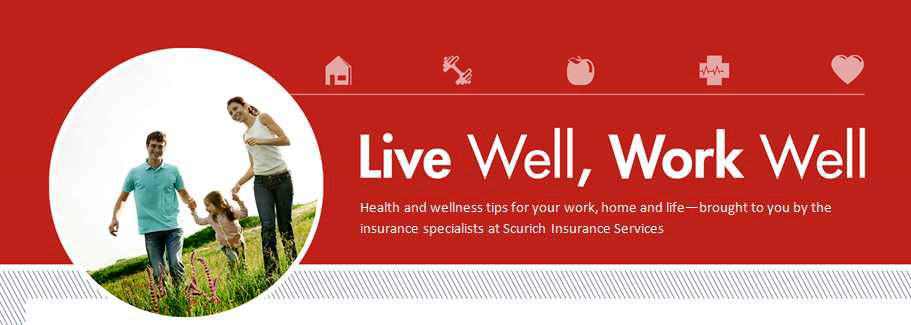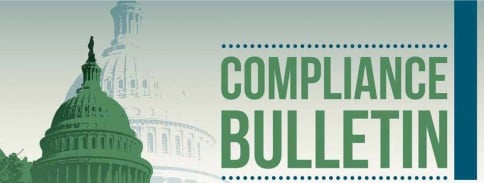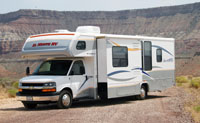
Your commercial insurance policies protect your business, making your insurance agent an essential resource for your company. While you may not have your agent on speed dial, you will want to contact him or her in several circumstances.
Verify Coverage Details
You can purchase a variety of different policies for your business, and need to understand your exact coverage. Contact your insurance agent to verify which types of coverage you have and your policy limits.
Update Your Policy
When you add a vehicle to your commercial fleet, sell a piece of equipment, move to a new location, or make other changes to your business operations, call your insurance agent. These updates could affect your insurance needs, policy and premium.
File A Claim
If you need to file an insurance claim, contact your agent immediately. You may call the agent’s office, send an email or text, or fill out an online claim form on the company’s website. Remember to submit pictures, too, as you get your claim process started.
Ask Questions About a Claim
After you file an insurance claim, you may have questions about the adjuster’s findings or the settlement timeline. Feel free to contact your agent and ask any questions you may have.
Discuss Your Bill
Whether you pay your insurance bill annually, semi-annually or quarterly, you may inspect your bill and realize that you have questions about one of the charges or fees. Most insurance agents remain transparent about billing, and they can explain anything you don’t understand about your insurance charges, fees or payment date.
Pay Your Bill
If you experience any issues when you pay your insurance bill, call your agent. You may also ask for a change in the policy due date or a change in payment frequency.
Initiate an Annual Review
You should receive a notice a few weeks before your commercial insurance policy’s renewal date. Ask your agent for a meeting to renew your coverage. During this meeting, discuss details about your business and the types of insurance you need, including coverage limits and cost, as you verify that you have the right insurance for your needs.
Request a New Quote
Based on your insurance policies you purchase and your loyalty to your commercial insurance company, you may qualify for discounts or a more competitive rate. Your agent can rework your coverage limits, check for discounts and give you a new quote that meets your budget.
Throughout the year, you may wish to contact your commercial insurance agent for several reasons. Always feel free to reach out and discuss your needs as you purchase the right coverage for your business.
Read more
 A home might seem like one of the safest places for a child to play, but household furniture carries many unforeseen dangers, especially for young children.
A home might seem like one of the safest places for a child to play, but household furniture carries many unforeseen dangers, especially for young children.
Deadly Consequences
A child is killed every two weeks due to falling furniture in the United States—70 percent are caused by TVs alone. Injuries are even higher, with over 25,000 per year. Preventive measures should be taken to ensure children are safe at home.
Preemptive Protection
Parents will often “baby-proof” their house when expecting a child. This typically includes rounding off sharp table corners and installing baby locks. Surprisingly, properly anchoring heavy furniture is often overlooked.
Preventing Tip-overs
- Use sturdy furniture to hold your TV and other appliances.
- Mount flat-screen TVs whenever possible.
- Closely follow assembly instructions for TVs and furniture.
- Secure top-heavy furniture with anti-tip brackets.
- Remove enticing objects from the top of heavy furniture to discourage children from climbing.
Furniture Tip-over Myths
- Heavy furniture will not fall over. This is a common misconception. Even base-heavy furniture can be hazardous when children open the drawers and climb on them.
- Rooms where children aren’t allowed don’t need precautions. Even a brief opportunity to wander in a bedroom or office can end in tragedy if the child plays on heavy furniture. Tip-overs happen quickly, and it is dangerous to leave a room unprotected.
- Latched dresser drawers are sufficient. Latches made for cabinets are not a substitute for an anchor. Young children can figure out the latches or even open drawers wide enough to begin climbing.
- Older children know they shouldn’t climb. Children aren’t masters of reason and can be compelled to climb if they see a toy sitting on top of a dresser. Additionally, children do not commonly think of shelves or dressers as dangerous, so climbing seems low-risk.
- Sturdy furniture is safe. No matter the weight, no matter how sturdy, all furniture can pose a risk if not properly anchored. The quality of furniture does not lower the danger.
Remember, taking a few extra precautions now can save a child’s life in the future. Play it safe and anchor heavy furniture.
Read more

The Contracting Classification Premium Adjustment Program (CCPAP) is a discount program that can reduce the amount that an employer pays in workers’ compensation premiums.
How does the CCPAP work?
The CCPAP was developed to provide a premium credit for employers in the contracting and construction industry who pay their employees higher than average wages. The CCPAP discount is calculated using the hourly rate of employees who are classified within the construction industry’s contracting class codes.
The system that is used to calculate workers’ compensation premiums groups employees according to risk. For each classification, the employer must pay a certain amount of workers’ compensation premiums based on every $100 of payroll. Since high wages amount to higher workers’ compensation premiums, employers use the CCPAP to lower their premiums to an amount more level with what they would be paying if they paid their employees less. With the CCPAP, employers aren’t penalized for paying their employees higher than average wages.
How does an employer apply for the CCPAP?
An employer must complete the CCPAP application and return it to the National Council on Compensation Insurance (NCCI) within 180 days from either the effective date or the anniversary rating date of the workers’ compensation policy. The CCPAP must be applied for every year.
When completing the application, the employer must determine which calendar quarter data to use. The employer will also be asked to provide a description of operations or its classification, the appropriate classification code, the total wages paid and the total hours worked.
Once the application is received by the NCCI, the average hourly wage will be computed and the CCPAP credit will be generated according to the rules for the state in which the application is being made. The insurance company will then be notified, and the credit will be applied to the policy.
In which states is the CCPAP available?
The CCPAP is not a national program. Each participating state has its own rules, which include qualification and calculation of credits. Some states may also have an hourly pay rate threshold for entry into this program.
To see if the CCPAP is available for your business, consult with Scurich Insurance Services for more information about the program and the potential to lower your workers’ compensation premiums.
Read more

On Jan. 9, 2017, the Occupational Safety and Health Administration (OSHA) issued a final rule that amends its beryllium standards for the general, construction and shipyard industries.
The final rule sets a new permissible exposure level (PEL) and requires new provisions to protect workers, including exposure control measures, exposure assessments, respiratory protection, personal protective clothing and equipment, and new conventions for housekeeping, medical surveillance, hazard communication and record keeping.
The final rule becomes effective on March 10, 2017, though compliance is not required on most provisions until March 12, 2018.
ACTION STEPS
Employers should become familiar with the new standards and evaluate their current workplace practices and training programs to ensure compliance with the final rule by the applicable deadlines.
Beryllium
Beryllium is a metal that is lighter than aluminum and stronger than steel. Beryllium is also durable, stable, conductive and nonmagnetic. Because of its properties, beryllium is often used as an alloying agent to produce beryllium copper, and it can be found in nuclear reactors, machine parts and springs, complex electronic equipment and aircraft.
However, beryllium is also very toxic. Exposure to unsafe beryllium levels can cause respiratory problems and skin disease. Beryllium exposure can also affect an individual’s eyes, liver, kidneys, heart, nervous system and lymphatic system. Also, beryllium is a known cancer-causing substance.
Affected Employers
OSHA estimates that approximately 35,000 workers are exposed to beryllium in approximately 4,088 establishments in the United States. However, even though the highest risk of exposure for workers is at the workplace, exposure can also happen through contaminated clothing and vehicles and can affect a worker’s family members and the general public.
Employers in manufacturing and alloy production, machining and fabrication, and recycling have traditionally shown the highest average exposures to beryllium.
New PELs
The final rule establishes two new PELs that apply to beryllium in all of its forms, compounds and mixtures. These standards are:
| TWA PEL 0.2 μg/m3
An eight-hour time-weighted average (TWA) PEL of 0.2 micrograms per cubic meter of air |
& |
STEL PEL 2.0 μg/m3
A 15-minute short-term exposure limit (STEL) of 2.0 micrograms per cubic meter of air |
TWA PEL
The TWA PEL dictates that employers cannot allow the average worker exposure during an eight-hour work shift to exceed 0.2 μg/m3. The new TWA PEL represents one-tenth of the previous PEL. The new TWA PEL is ten times smaller than the previous PEL because OSHA found that the previous standard posed a “significant risk of material impairment of health to exposed workers.”
Even though OSHA concluded that a TWA PEL of 0.1 μg/m3 was preferable, it chose to adopt the 0.2 PEL out of concerns over the feasibility of implementing a 0.1 TWA PEL.
STEL PEL
The STEL PEL, or ceiling limit, was adopted because even the 0.2 μg/m3 TWA PEL continues to pose a significant health hazard to workers. The STEL PEL is intended to protect workers from the harm that may result from beryllium exposures that, though brief, exceed the TWA PEL.
The final rule sets the beryllium STEL PEL at than 2.0 μg/m3 of beryllium in any 15-minute sample during the work shift. Employers will be required to make sure that no worker is exposed to a higher concentration. Employers will need to measure their STEL PEL during the highest-exposure operations performed by workers.
Action Level
The final rule also implements an action level for beryllium. Under the final rule, the action level for beryllium is a concentration of airborne beryllium of 0.1 μg/m3 calculated as an eight-hour TWA. When beryllium concentrations are equal to or higher than the action level trigger, an employer may have to:
- Conduct periodic exposure monitoring (if the employer is following the scheduled monitoring option);
- List the operations and job titles that are reasonably expected to expose workers at or above the action level as part of their written exposure control plan;
- Ensure that at least one of the controls listed by the final rule is set in place (unless the employer can demonstrate, for each operation or process, that such controls are either not feasible or that worker exposures are below the action level based on at least two representative personal breathing zone samples taken at least seven days apart);
- Provide employee medical surveillance for employees that are exposed at or above the action level for more than 30 days per year (an employer’s medical surveillance obligations allow affected employees to receive exams at least every two years at no cost to the employee);
- Follow medical removal protocols. Employees eligible for removal can choose to remain in environments with exposures at or above the action level, provided they wear respirators. These employees may also choose to be transferred to comparable work in environments with exposures below the action level. However, if comparable work is not available, the employer must maintain the employee’s earnings and benefits for six months or until comparable work becomes available.
Additional Requirements
The table below provides a summary of additional requirements and changes imposed by the final rule.
| Exposure Assessment |
· Employers must provide exposure assessment when workers are reasonably expected to be exposed to airborne beryllium.
· Employers may choose between the performance or schedule monitoring options. |
| Beryllium Work Areas |
· Employers in the general and shipyard industries must establish, maintain, demarcate and limit access to certain areas to limit worker exposure.
· Employers in the construction industry must designate a “competent person” to demarcate certain areas of beryllium exposure. |
| Written Exposure Plan |
· Employers must establish, implement, and maintain a written exposure control plan and specify the information that must be included in the plan.
· Written exposure plans must be reviewed annually and updated as required.
· Employers must also make a copy of the written plan to any employee who is, or can reasonably be expected to be, exposed to airborne beryllium. |
| Respiratory Protection |
· Employers must provide adequate respiratory protection at no cost to their employees. Powered air-purifying respirators (PAPRs) instead of negative pressure respirators must be provided if requested by employees.
· Employers must ensure that employees use respiratory protection in certain situations. |
| Personal Protective Equipment (PPE) |
· Employers must provide adequate PPE to their employees when:
o Exposure exceeds, or can reasonably be expected to exceed, the TWA PEL or STEL; and
o There is reasonable expectation of dermal contact with beryllium.
· Employers must follow the final rule’s updated standards for appropriate removal, storage, cleaning and replacement of required PPE. |
| Hazard Communication |
· Employers have to take additional steps to warn and train employees about beryllium hazards. |
| Housekeeping |
· Employers in the general industry must:
o Maintain all surfaces in beryllium work areas as free as practicable of beryllium;
o Clean spills and emergency releases of beryllium promptly;
o Use appropriate cleaning methods; and
o Dispose of materials containing or contaminated with beryllium properly.
· Employers in the shipyard and construction industries must:
o Follow the required written exposure control plan when cleaning beryllium-contaminated areas;
o Use appropriate cleaning methods, and
o Provide beryllium-containing material recipients for use or disposal with a copy of the hazard communication or warning described in the final rule. |
| Hygiene Areas and Practices |
· Under specified circumstances, employers must provide employees with readily accessible washing facilities and change rooms (access to showers for employee use may also be required by the general industry standard).
· Employers must take certain steps to minimize exposure in eating and drinking areas. |
Appendix A
The final rule also includes Appendix A to the final standard for the general industry. This appendix provides information to employers on recommended control options that employers could use to comply with their requirement to reduce exposure to airborne beryllium in beryllium work areas.
However, compliance with the information in Appendix A is recommend, not required. OSHA stated in the final rule “Appendix A is for informational and guidance purposes only and none of the statements in Appendix A should be construed as imposing a mandatory requirement on employers that is not otherwise imposed by the standard. In addition, this appendix is not intended to detract from any obligation that the rule imposes.”
More Information
Please contact [B_Officialname] or visit the OSHA Beryllium webpage for more information on this topic.
Read more
 If you’ve just bought a recreational vehicle. and can’t wait to get on the road. will Auto insurance protect your pride and joy?
If you’ve just bought a recreational vehicle. and can’t wait to get on the road. will Auto insurance protect your pride and joy?
That depends. You might want to get an endorsement to your Auto policy that would provide coverage. However, since your R. means so much more to you than just transportation, it’s best to get specialized insurance that a typical Auto policy won’t cover. Recreational Vehicle insurance combines Auto, Homeowners, Renters, and Travel coverages into a single policy that will also insure generators, water pumps and refrigerators – items that standard Auto or Homeowners policies would not cover.
The amount of coverage will depend on the value of the RV and its contents, as well as your driving record.
Before you hit the open road, give us a call our office for a comprehensive policy on your vehicle so that you can get behind the wheel with peace of mind.
Happy trails!
Read more








 If you’ve just bought a recreational vehicle. and can’t wait to get on the road. will Auto insurance protect your pride and joy?
If you’ve just bought a recreational vehicle. and can’t wait to get on the road. will Auto insurance protect your pride and joy?